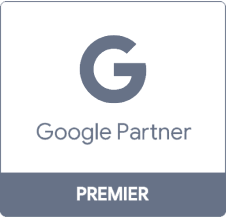6 UI Tips to Take Your Website to New Heights
If you want to create an effective website, you need UI design. With UI design, you put your audience first and create a website that keeps them engaged.
So, how can you integrate UI into your website design?
On this page, we’ll discuss the difference between UI and UX design and provide you with six tips to help you create a website with UI in mind. If you need help creating a custom site for your business, call us today at 888-601-5359 to speak with a strategist.
Want to improve your website design?
What is UI Design?
UI Design stands for User Interface Design. This type of design focuses on anticipating what users will need to do on your site. You design your site to enhance user experience.
A big part of UI design is creating elements that are easy for your audience to access. You want them to navigate and use your site without struggling. It’s also important to include elements that are easy for your audience to understand.
UI design focuses on how your audience interacts with your page. This is where you build your site to make it easy for your audience to find information and navigate your site.
UI design goes hand in hand with UX design, but it is important to note that they aren’t the same thing. These two elements play different roles in building your site.
UI vs. UX design
When you design your site, it’s important to know the difference between UI and UX design. Many businesses confuse these two terms, but they serve different purposes for your site.
UX stands for User Experience design. You may think UX design focuses solely on the visual aspect of design, but it also focuses on the analytical and technical elements of design. UX design focuses on building the bones of your website.
When you use UX design, you focus on a human first way of designing. Your website is structured to work for humans who visit your site. It’s about creating a website that is structured to improve usability and ease of use.
UX design focuses on improving the structure and optimization of your site to enhance a customer’s experience. You want to improve a customer’s experience with your company and your products.
UI design is slightly different. This type of design focuses more on the graphic design of your website. While both elements revolve around improving the user experience, UI design focuses on the visual aspect of user experience.
Think of UI and UX design like a home. The UX design is the elements that make up the home. This is things like the wood, the framing, drywall, cement, and brick.
These elements give the house structure and frame it. They set up the basic configuration of your house and determine how it is shaped.
UI design is the paint, cabinets, and furniture in the home. These pieces are the visual aspects of the home. Your configuration helps you define each space in the home and guides the user’s eye across the room.
As you can see by looking at the home example, both elements are important. Without UX design, you have nowhere to put your UI design. If you don’t have UI design, you just have barren walls with no personality.
Both elements are crucial to your design. They each bring something important to your website’s design, so it’s important you use them together.
We don’t want to tell you about the work we do, we want to SHOW you.
View Our Portfolio
We’ve built over
Websites
in a variety of industries.
6 tips for integrating UI design
Now that you have a better understanding of UI design and how it adds to your site, you’ll want to integrate it into your website’s design. So, how can you use UI design to create a better website experience for your audience.
1. Know your audience
When you want to integrate a UI design, you need to know your audience. They are the ones who will be on your site looking for information. You need to make sure that your site is designed to enhance their experience.
Ask yourself: What would they want to see on my site? Are there elements I can add to enhance their experience?
You need to know what your audience would want, so you can create effective elements and layouts for them. It will help you build a better UI design for your audience.
If you know your target audience well, you know what they need. You know why they will come to your site. This will help you build a design that is based on their wants and needs.
2. Make sure all your elements are clear
When you design your site, you want it to be easy for your audience to use. A big part of that is using design elements that have a clear purpose. Your audience should know what those design elements do without having to think about it.
People will avoid things if they don’t understand what they are or their purpose. You want to stick to common elements that people know well.
Some common elements include shopping cart icons, bells for notifications, or the hamburger button that indicates a menu. These are all elements that people know what they mean and feel comfortable using. If you use elements that your audience knows well, they will feel more comfortable when navigating your site.
3. Create consistency and simplicity
A big part of UI design is consistency and simplicity. It’s not only important that you stay consistent with universal elements and icons, but also that you are consistent across all pages of your website. You want to keep your website consistent and simple to enhance your audience’s experience on your site.
When you design your site, you want to use common elements on your page. We stated some of those elements in the previous example. Common elements help your audience feel more comfortable using your site.
When you use common elements, your audience can complete tasks quicker. They know how to navigate your site better, so they know what to do to complete a task. It makes it less confusing for your audience, which can lead to them achieving whatever goal you set.
It is important that you build consistency across all pages of your site. Users don’t want to go from one page to the next to find a completely different page. They want to see pages structured similarly so they know how to navigate the page.
This is especially important with the colors and typography on your site. You don’t want to have one style on your home page and a completely different style on another page. It is important that you carry the same colors, typography, and style throughout your page.
The design and structure of your site should be simple, too. Your audience shouldn’t need a map to figure out how to find information on your site. They should be able to enter your site and know exactly where to go to find the information they need.
You’ll want to make your design simple so your audience can navigate it easily. This will drive better results for your business because you won’t deter people away with a complicated design.
4. Choose your page layout wisely
Your page layout plays an important role in how your audience experiences your site. Not only should it be consistent and simple, but it needs to be created with your audience in mind. You need to think about how your audience uses your site and build a layout that works for them.
When you create your layout, you want to draw the users eye to the most important part of your site. If you’re a HVAC company that wants to get people interested in heating systems for the winter, you want to create something that will draw the users eye to that service.
A great way to do this is through visual hierarchy. Visual hierarchy puts the most important elements first visually. It draws the user’s eye to that element because it is the most noticeable on the page.
In this case, an HVAC company may have a large photo banner at the top of their page that guides users to their heating services with small photo icons beneath it that detail their other services. When a user looks at the page, they are drawn to the large photo because it catches their eye.
When you structure the layout of your site, you need to consider the spacing of everything on your page. You want to make sure your site looks clean and professional.
It’s also important for readability. If your site’s layout is structure properly, people can skim and scan through your site easier. This creates a better experience for your audience.
5. Simplify forms
Many websites have forms on them. You want to capture leads to use marketing tactics to get them to convert. This is something very common on websites, but it can have a negative impact on your audience if it isn’t done right.
People hate filling out long forms. They don’t want to take the time to fill out every small piece of information. Users are constantly busy and on-the-go, so they don’t want to waste time filling out lengthy forms.
When you design your website, you need to think about whether the forms on your site are necessary. If you have numerous forms on your site, you may not need all of them. You only want to use forms where they are necessary and most likely to capture valuable leads.
For the place you use forms, you need to simplify them. A simple sign-up form entices more people to fill it out because they know it won’t take long. Design your sign-up forms so that you only ask for basic information that users can fill out quickly.
6. Anticipate mistakes
When you implement your UI design, you need to anticipate for human error. People will make mistakes when they use your site. It’s important that you design your site so these mistakes can be easily fixed or avoided.
How many times have you filled out a form completely, only to click the “Next” button and find out you missed certain required elements? It ends up erasing half your information and makes you start all over again. This can be an irritating experience for users, so it is best to avoid it.
You can do this by implementing elements that anticipate for mistakes. One great element you can include is buttons that are inactive until someone fills out all the required information on a form. If the button isn’t active, users know that they missed an important information and can go back and fill it in.
You can also include elements where forms aren’t submitted if emails aren’t entered properly, pop-ups that ask for confirmation of an action, or notifications that passwords don’t match. These visual elements help users have a better experience on your site.
When you can anticipate mistakes, you can provide a better experience for your audience. They will continue to engage on your site, which will lead to better results for your business.
WebFX can help you implement a UI design into your website
It is important that you have a good UI design for your website so you can keep leads engaged on your site. You want them to have a positive experience on your site. This will help you earn more conversions for your business.
At WebFX, we know how to implement a UI design into your website. We’re a full-service digital marketing company that specializes in customized web designs that focus on both UX and UI design.
We have a team of 500+ experts that will bring their knowledge and expertise to your campaign. Our award-winning team of designers will help you build a customized website you’ll love. We can help you create a website that keeps your audience engaged on your site.
If you’re looking for a company that drives results, look no further. To date, we’ve driven over $6 billion in sales and over 24 million leads for our clients. We focus on putting our clients’ success first.
Our clients love the work we do, too. In fact, we have over 1,100 client testimonials from a variety of industries. Check them out to see what it’s like to partner with a top web design company like WebFX!
Get started today
If you’re ready to start building your UI designed website, we can help. Contact us online, or call us today at 888-601-5359 to speak with a strategist about your customized website.
We look forward to hearing from you!
Related Resources
- 6 Best Wireframe Tools for an Efficient Web Design Process in 2024
- 6 Landing Page Mistakes to Avoid [and How to Fix Them]
- 6 Service Page Web Design Examples to Inspire You
- 6 Types of Web Design to Consider for Your Website
- 7 Creative Ideas for Custom Die Cutting
- 7 Web Design Ideas for Creating a Website That Drives Results
- 8 Tips for Using Images in Website Design
- 9 Best Website Designs to Inspire Your Site for 2024
- 9 Professional Web Design Tips
- A Comprehensive Guide Inside Your Head
Explore 100K+ Hours of Industry Expertise
- 5 Web Design Tips for Private Investigators
- 5 Web Design Tips for Therapists and Psychiatrists
- 6 Critical Elements for Solar Company Web Design
- 6 Essential Features of Great Engineering Web Design
- 6 Ways to Boost Web Design for Fire Protection Companies
- 6 Web Design Tips for Churches Looking to Grow
- 6 Web Design Tips for Locksmiths You Can’t Ignore
- 6 Web Design Tips for Outdoor Products Companies
- 6 Web Design Tips for Restaurants and How to Pull Them off
- 7 Web Design Strategies for Petrol and Coal Product Companies
Additional Reading
- 8 Qualities of a Great Web Designer
- ADA vs. 508 Compliance vs. WCAG
- Best Practices for Web Design
- Best Website Builders
- Explore the Best Web Design Companies of 2024
- High Quality Web Design
- Lebanon Pa
- The Ecommerce Design Firm That Drives Results
- What Makes a Bad Website
- Why is My WordPress Website Not Loading? Quick Fixes to 5 Common WordPress Errors
- Why is My WordPress Website Slow: 8 Steps to Speed It Up
- Why is Responsive Design So Important?
- Why is Web Design Important?
- Why Small Businesses Need Web Design Services
- Williamsport Web Design Services Elevate Your Business to Your Success









